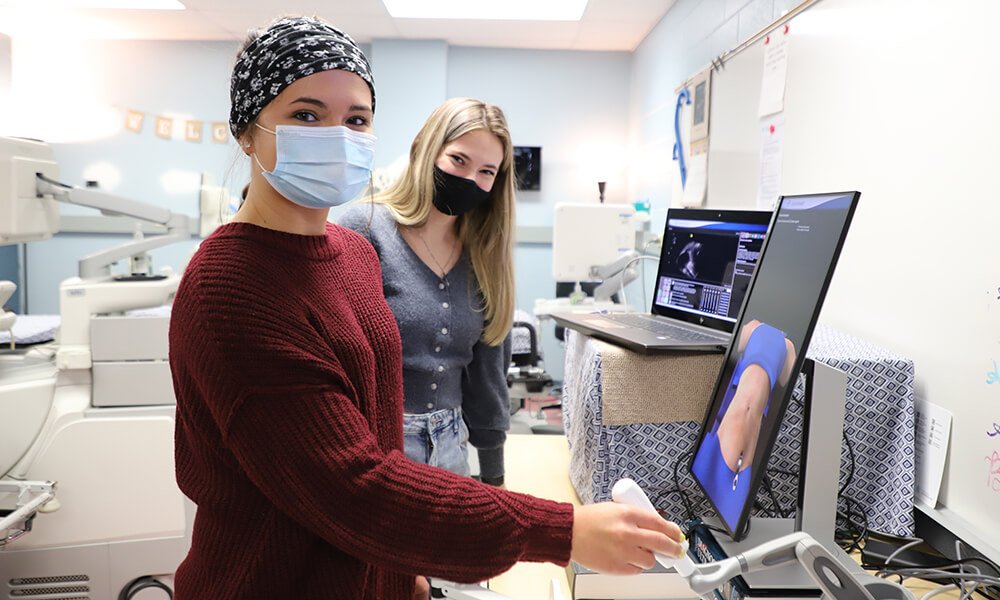
Concordia University Wisconsin’s Diagnostic Medical Sonography program has added an advanced virtual reality ultrasound training simulator to its resources for students.
CUW is one of the only programs in the state to offer the Intelligent Ultrasound ScanTrainer Simulator.
The simulator was purchased using federal Coronavirus Response and Relief Supplemental Appropriations Act (CRRSAA) funding. Included in the act, which was signed into law in December, was a second round of stimulus funding for the Higher Education Emergency Relief Fund II for colleges to award as financial aid grants for students and to use toward academic resources.
 Concordia’s new simulator is designed to support assessment and provide a practice tool that is available to students 24 hours a day, seven days a week. Professors can access a cloud-based library of more than 1,000 patient cases to comprehensively test student-clinicians’ scanning and diagnostic skills.
Concordia’s new simulator is designed to support assessment and provide a practice tool that is available to students 24 hours a day, seven days a week. Professors can access a cloud-based library of more than 1,000 patient cases to comprehensively test student-clinicians’ scanning and diagnostic skills.
Practice is an essential part of a diagnosticians’ journey. The chair of Concordia’s imaging department, Lisa Reimer, MS, RDMS, RVT, RT(R), says students must complete a minimum of 1,680 clinical hours with specified clinical competencies in order to graduate, and preparation is key.
“The more practice time students have ahead of time, the more proficient they can become so that they can really maximize their clinical time,” says Reimer. “Obstetrics, for example, is a huge component of a sonographers’ skillset, but it’s hard for student-clinicians to get a full, 45-minute time block. Hospitals have to prioritize patients’ needs and keep their operations running efficiently, so to have this simulator that allows our students to come in with their bearings about them, it’s huge.”
Growing the Diagnostic Medical Sonography program
In addition to the simulator, Concordia’s DMS program boasts five ultrasound systems. Altogether, CUW offers one of the most enhanced and diverse educational scan labs in the state.
The variety of vendors and models allows students to diversify their knowledge, which in turn helps them more readily transition into clinical rotations. During their first two semesters in the program, students spend at least eight dedicated hours per week on the systems. Students may also sign up for lab extensions of didactic instruction to enhance their skills.
Concordia’s program is currently at peak capacity with eight students enrolled. The program annually celebrates a 100-percent program completion rate, with 100 percent of candidates successfully obtaining credentials and job placements within one year of graduation.
Want in?
Check out CUW’s Bachelor of Science in Diagnostic Medical Sonography program here.
— This story is written by Kali Thiel, director of university communications for Concordia University Wisconsin and Ann Arbor. She may be reached at kali.thiel@cuw.edu or 262-243-2149.
If this story has inspired you, why not explore how you can help further Concordia's mission through giving.